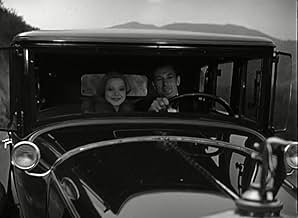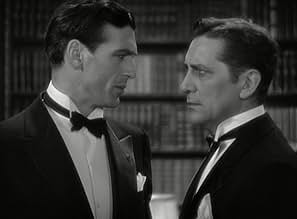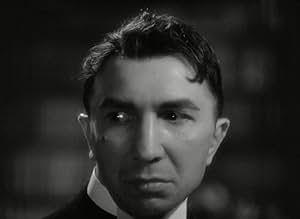- Premios
- 4 premios ganados en total
William 'Stage' Boyd
- McCoy
- (as William Boyd)
Terry Carroll
- Prison Inmate
- (sin créditos)
Allan Cavan
- Cop
- (sin créditos)
Bill Elliott
- Nightclub Patron
- (sin créditos)
Norman Foster
- Shooting Gallery Patron
- (sin créditos)
Paulette Goddard
- Nightclub Patron
- (sin créditos)
Bert Hanlon
- Baldy
- (sin créditos)
A.R. Haysel
- Fourth Henchman
- (sin créditos)
Matty Kemp
- Man Stabbed with Fork
- (sin créditos)
- Dirección
- Guionistas
- Todo el elenco y el equipo
- Producción, taquilla y más en IMDbPro
Opiniones destacadas
Visually striking pre-code gangster picture starring Gary Cooper as a carnival sharpshooter who wants nothing to do with girlfriend Sylvia Sidney's father's bootlegging business until she is sent to prison and he needs money to help get her out. Cooper uses his "aw shucks" persona well here. Sidney is absolutely gorgeous and does a great job as the naive girl who grows up fast when she's betrayed by her own father. Paul Lukas and Guy Kibbee are probably two of the more unlikely gangsters to ever appear on screen, but both make their parts work to their strengths. Based on a story by Dashiell Hammett, with characters who have names like The Kid and Big Fella. But the story isn't the main selling point. That would be Lee Garmes' camera-work and Ruben Mamoulian's direction. It's a beautiful-looking picture with some interesting techniques on display that are very impressive when you consider this was released in 1931. Mamoulian's jogging at a time when other directors are still learning to walk. One of the best gangster pictures not released by Warner Bros., who pretty much had the market cornered on that genre during the 1930s.
If it had been made 2 years later it would have been BANNED! The number one MUST SEE recommendation of the day!. The best Rouben Mamoulian film I have seen this far (have but have not yet seen J+H).
There's no wonder why this film got less than 200 votes. A bigger greyzone that could not care less about what's proper would not be seen again until the 60's. As morally ambiguous and dark as 70's grit but with a certain charm as well. Of course this had to lay low in the later 30's and sadly it does not appear to have been re-discovered.
Seriously. This got it all. Great actors: Gary Cooper, Sylvia Sidney and the this time not so lovable Guy Kibbee. And a mighty good director. This far I haven't been RM's biggest fans but I have liked his films a lot and with this he steps into a new league. One of the best 30's films I have ever seen! This is something I never thought even existed! 9.5/10
There's no wonder why this film got less than 200 votes. A bigger greyzone that could not care less about what's proper would not be seen again until the 60's. As morally ambiguous and dark as 70's grit but with a certain charm as well. Of course this had to lay low in the later 30's and sadly it does not appear to have been re-discovered.
Seriously. This got it all. Great actors: Gary Cooper, Sylvia Sidney and the this time not so lovable Guy Kibbee. And a mighty good director. This far I haven't been RM's biggest fans but I have liked his films a lot and with this he steps into a new league. One of the best 30's films I have ever seen! This is something I never thought even existed! 9.5/10
I thought I'd witnessed every wrinkle the crime/gangster flick had to offer, but the Garrett-Marcin-Hammett combination pull off some genuine thrills and surprises here, thanks to the inventively forceful direction by Mamoulian, the atmospheric photography by Lee Garmes, plus remarkably sharp film editing and flawless special effects. Brilliant acting helps too. Coop gives one of his most convincing performances as the reticent hayseed-turned-fearless bootlegger (the sort of character progression he was to repeat in other roles such as Sergeant York). Miss Sidney (pictured center) in her first major role is also an eye-opener. The principals receive great support from Paul Lukas, Wynne Gibson and Stanley Fields as the heavies, and even from Robert Homans' hard-as-nails detective. The movie has obviously been realized on an extensive budget which is brilliantly deployed in its realistic, crowd-filled sets.
I've only seen a couple of Sylvia Sidney's early films, but they all seem to feature at least one closeup of her face that reveals what's really going on in the picture. In Hitchcock's "Sabotage," there's a fascinating shot of her working at a theater box office when a guy she likes suddenly shows up unannounced. Hitchcock went in tight on her face as it slowly changes from a blank expression to a glow of sheer joy. I've never seen anything like it in any other film. And here, in "City Streets," the director dollies in and lingers on her face for a full minute while Hollywood cinema's first "voiceover" tells us what's going on in her thoughts. But really, the words are superfluous, because her brown, luminous eyes tell us everything. Sidney was perhaps too exotic and unconventional to compete for major stardom with the Clara Bow flappers and Jean Harlow blonds of her time. She was also difficult to get along with, according to some sources. But she is more timeless than most. Dashiell Hammett, who wrote "City Streets," said she was the best part of the movie. For me, she's the best part of any movie she's in.
10MikeMagi
Only two years after the introduction of sound, "City Streets" combined innovation and expressionism into one of the most riveting gangster movies of the era. So why isn't it as well known as "Scarface" or "Public Enemy," for example? Because the movie so outraged the Hayes office that Paramount was forbidden from re-releasing it for the next several decades. Fortunately, Turner Classic Movies has a pristine print which showcases the ingenuity of Rouben Mamoulian's direction (and his brilliant establishing shots,) the genius of Lee Garmes' shadowy camera-work and the suspense of the screenplay based on a Dasheill Hamlett story. That tale portrays gangland as a place where alliances are fleeting, where your best pal one moment is the same guy waiting to gun you down in an alley. Typical is Guy Kibbee, in a total turnabout from the affable old roue he so frequently played, as a smiling, sauntering hit man for hire. Heading the cast are two relative newcomers (at the time,) Gary Cooper as an ambitious sharpshooter known only as "The Kid" and Sylvia Sydney as his gullible young girl friend who swears that the mob will protect her -- until she winds up in the prison sweat shop. If you're a movie buff or simply want to see just how good (and ahead of its time) a movie from 1931 can be, catch "City Streets."
¿Sabías que…?
- TriviaThis was Clara Bow's last film on her five-year contract, but due to her nervous breakdown, Sylvia Sidney replaced her after Nancy Carroll declined the part.
- ErroresWhen the henchman is talking to the out-of-town hit men, he gives Pop's address as beginning with a "6" before the scene cuts away. In the next scene, the address of the building is "165".
- ConexionesFeatured in Hollywoodism: Jews, Movies and the American Dream (1998)
Selecciones populares
Inicia sesión para calificar y agrega a la lista de videos para obtener recomendaciones personalizadas
- How long is City Streets?Con tecnología de Alexa
Detalles
- Fecha de lanzamiento
- País de origen
- Idioma
- También se conoce como
- After School
- Locaciones de filmación
- Productora
- Ver más créditos de la compañía en IMDbPro
- Tiempo de ejecución
- 1h 23min(83 min)
- Color
Contribuir a esta página
Sugiere una edición o agrega el contenido que falta























